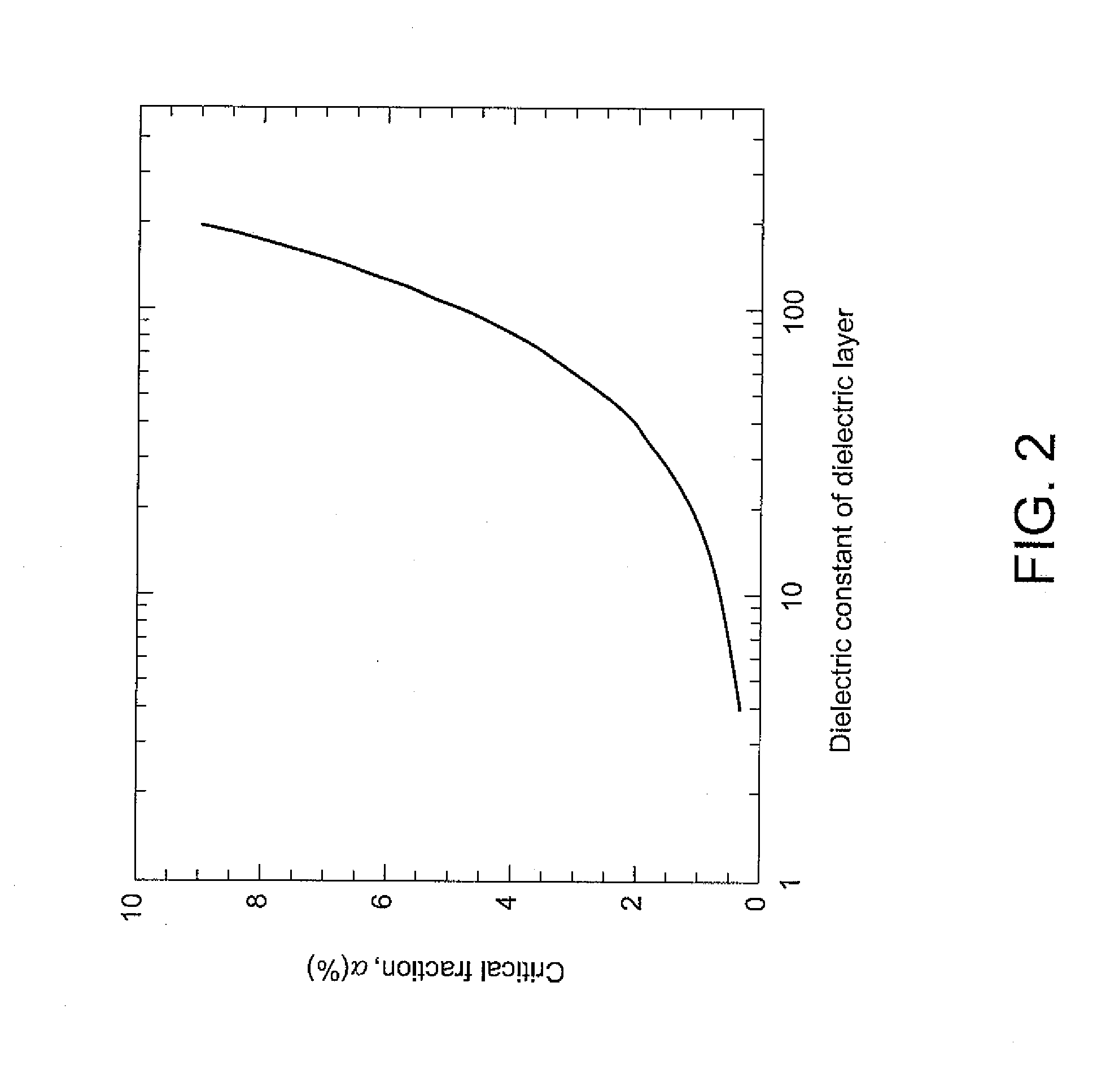High-capacity, low-leakage multilayer dielectric stacks
a multi-layer dielectric, high-capacity technology, applied in the direction of synthetic resin layered products, natural mineral layered products, chemistry apparatuses and processes, etc., can solve the problems of limited scaling of devices, limited research requirements, and few materials promising with respect to all of these guidelines
- Summary
- Abstract
- Description
- Claims
- Application Information
AI Technical Summary
Benefits of technology
Problems solved by technology
Method used
Image
Examples
example 1
[0047] The present disclosure relates to a thermodynamic model that at least in pertinent part describes the polarization and the dielectric response of ferroelectric-paraelectric bilayers and multilayers. Paraelectric layers can be dielectric materials. A strong electrostatic coupling between the layers typically results in the suppression of ferroelectricity at a critical paraelectric layer thickness. The bilayer is expected to have a gigantic dielectric response similar to the dielectric anomaly near Curie-Weiss temperature in homogeneous ferroelectrics at the determined critical thickness. A numerical analysis is carried out for a pseudomorphic BaTiO3 / SrTiO3 heteroepitaxial bilayer on SrTiO3 and a stress-free BaTiO3 / SrTiO3 bilayer. Complete polarization suppression and a dielectric peak are predicted to occur at approximately 66% and 14% of SrTiO3 in these two systems, respectively.
[0048] Ferroelectric (FE) multilayers, superlattices, and graded ferroelectrics have attracted co...
example 2
[0067] Compositional variations across ferroelectric bilayers result in broken spatial inversion symmetry that can lead to asymmetric thermodynamic potentials. For the case of insulating materials, ferroelectric multilayers will self-pole due to the electrostatic coupling between the layers. Polarization-graded ferroelectrics with smooth composition, temperature, or stress gradients are viewed as bilayer structures in the limit of the ever-increasing number of bilayer couples, thus concluding that the unconventional hysteresis associated with “up” and “down” polarization graded structures are real phenomena, and not artifacts associated with free charge or asymmetric leakage current.
[0068] Significant time has passed since an unconventional form of hysteresis was first observed and characterized from polarization-graded ferroelectrics (FE's). Subsequently, it was concluded that the offsets observed from “up” and “down” graded materials were the result of “built-in” potentials due t...
PUM
| Property | Measurement | Unit |
|---|---|---|
| dielectric constant | aaaaa | aaaaa |
| dielectric constant | aaaaa | aaaaa |
| dielectric constant | aaaaa | aaaaa |
Abstract
Description
Claims
Application Information
 Login to View More
Login to View More - R&D
- Intellectual Property
- Life Sciences
- Materials
- Tech Scout
- Unparalleled Data Quality
- Higher Quality Content
- 60% Fewer Hallucinations
Browse by: Latest US Patents, China's latest patents, Technical Efficacy Thesaurus, Application Domain, Technology Topic, Popular Technical Reports.
© 2025 PatSnap. All rights reserved.Legal|Privacy policy|Modern Slavery Act Transparency Statement|Sitemap|About US| Contact US: help@patsnap.com



